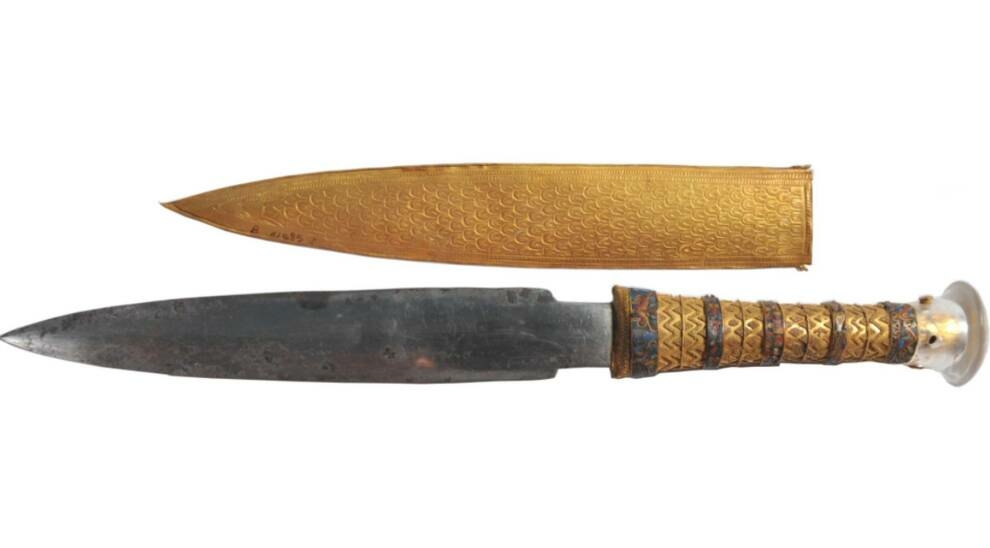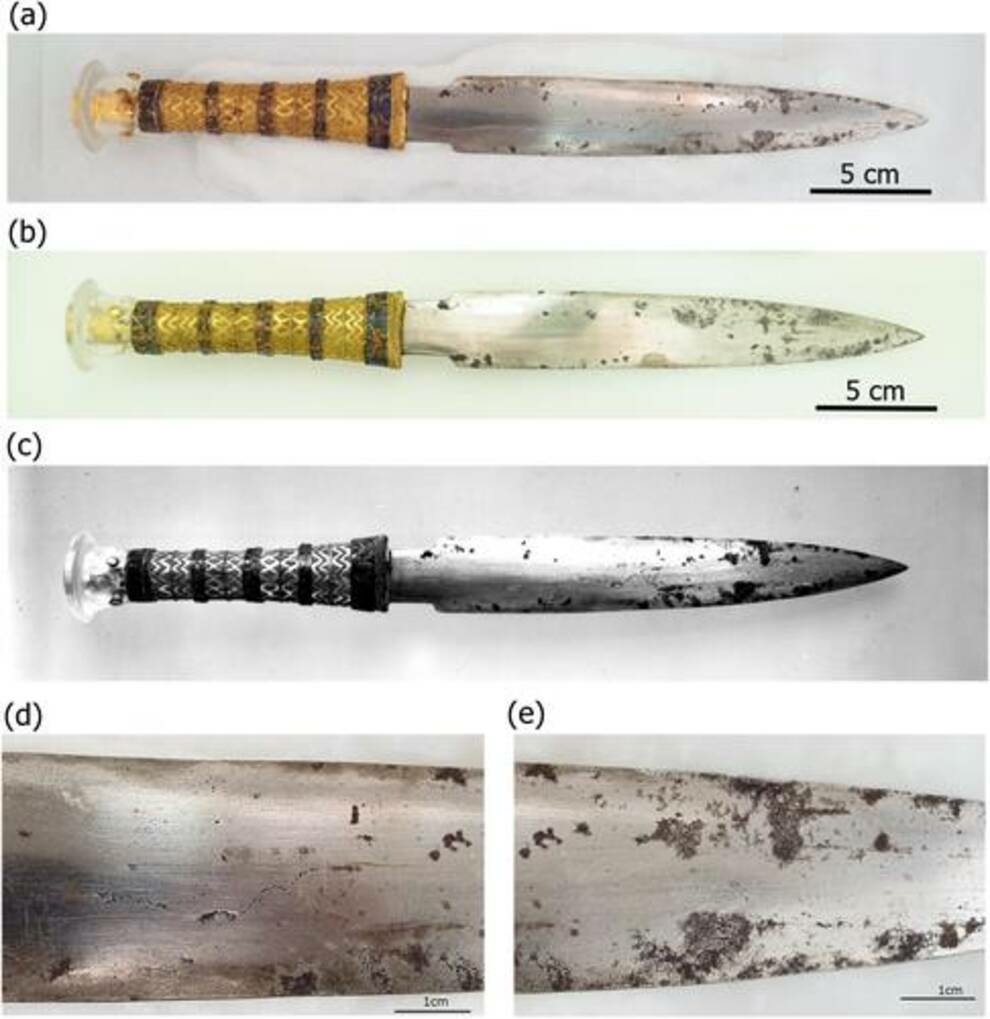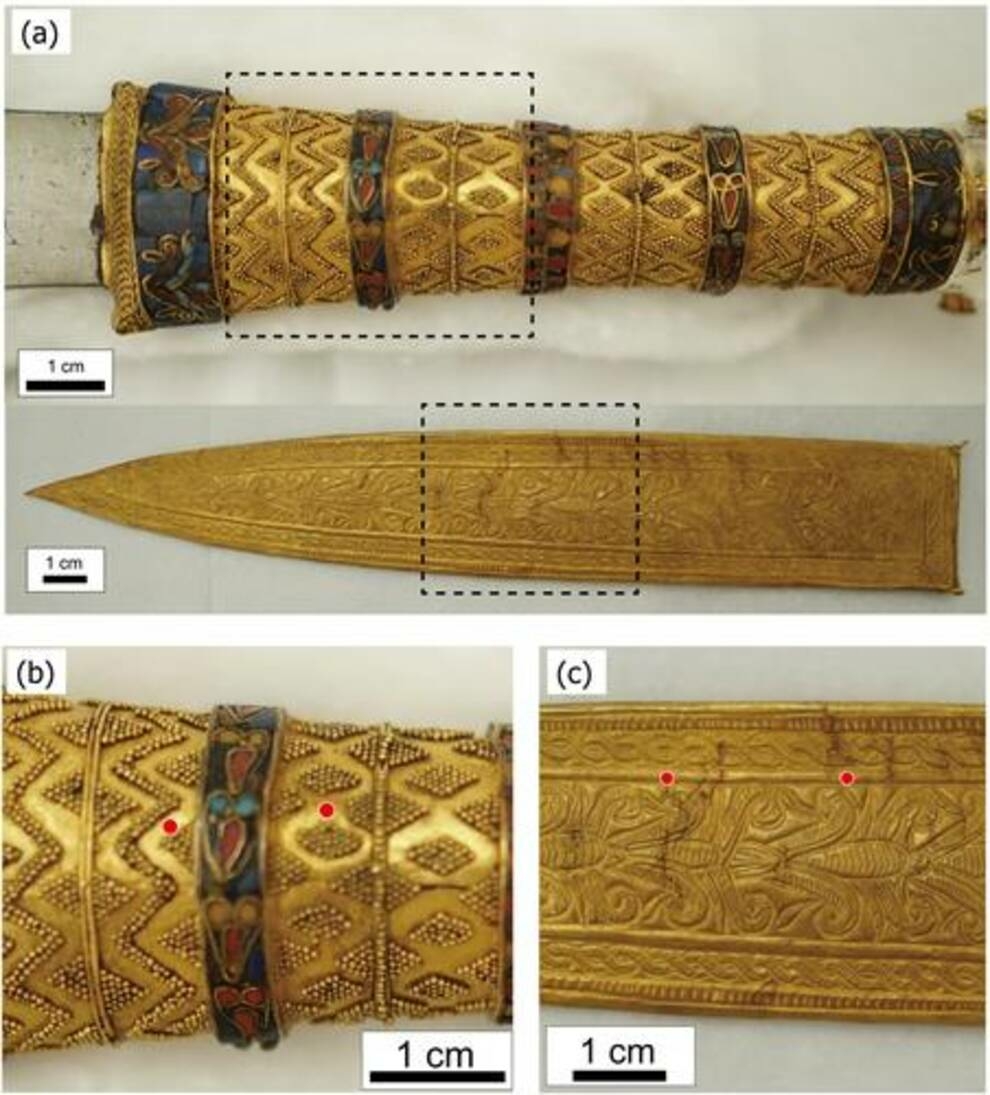
Scientists have investigated the "space" dagger of Tutankhamun
The "space iron" dagger found in the tomb of Tutankhamen was studied by the joint efforts of Japanese and Egyptian scientists.
The study was conducted using X-ray scanning, performed at the microscopic level. Concretions of iron, nickel, manganese and cobalt were found in the metal. On the surface of the blackened spots of the blade are sulfur, chlorine, calcium and zinc.
The scientists concluded that the dagger was made of octahedrite, one of the most common classes of iron meteorites. The presence of iron sulfide with a characteristic pattern that adorned the blade made it possible to understand that the weapon was forged at a temperature not exceeding 950 ° C.
Chemical analysis did not help to identify the place of creation of the dagger, so scientists turned to archeology. They used a series of ancient tablets more commonly known as the Amarna Archive. They talked about a certain iron dagger, which "rested" in a golden scabbard. A gift for Amenhotep III in honor of his daughter's marriage to the pharaoh. This suggested that the meteorite, which served as the material for the dagger, fell on the territory of modern Syria.
Recall that a 35-centimeter iron dagger was found during archaeological excavations in the burial chamber of Tutankhamun in the Valley of the Kings in the 1920s. The discovery puzzled scientists greatly, as the Iron Age began a century after the death of the pharaoh. Also at that moment, people did not yet possess the necessary technologies to create such items.
The meteorite origin of the dagger was confirmed back in 2016. However, issues related to the technology of its creation have not been resolved.
See also: AI will be able to decipher and restore ancient texts - scientists


The study was conducted using X-ray scanning, performed at the microscopic level. Concretions of iron, nickel, manganese and cobalt were found in the metal. On the surface of the blackened spots of the blade are sulfur, chlorine, calcium and zinc.
The scientists concluded that the dagger was made of octahedrite, one of the most common classes of iron meteorites. The presence of iron sulfide with a characteristic pattern that adorned the blade made it possible to understand that the weapon was forged at a temperature not exceeding 950 ° C.
Chemical analysis did not help to identify the place of creation of the dagger, so scientists turned to archeology. They used a series of ancient tablets more commonly known as the Amarna Archive. They talked about a certain iron dagger, which "rested" in a golden scabbard. A gift for Amenhotep III in honor of his daughter's marriage to the pharaoh. This suggested that the meteorite, which served as the material for the dagger, fell on the territory of modern Syria.
Recall that a 35-centimeter iron dagger was found during archaeological excavations in the burial chamber of Tutankhamun in the Valley of the Kings in the 1920s. The discovery puzzled scientists greatly, as the Iron Age began a century after the death of the pharaoh. Also at that moment, people did not yet possess the necessary technologies to create such items.
The meteorite origin of the dagger was confirmed back in 2016. However, issues related to the technology of its creation have not been resolved.
See also: AI will be able to decipher and restore ancient texts - scientists

Photo © phys.org

Photo © phys.org


